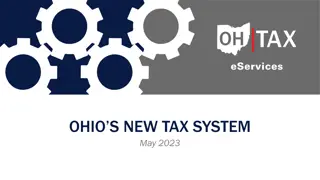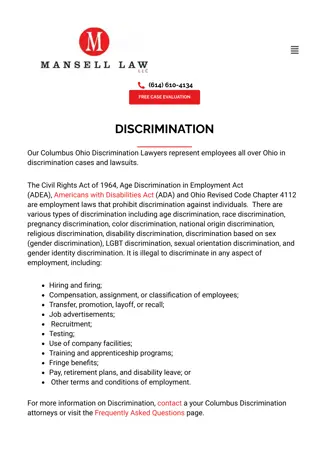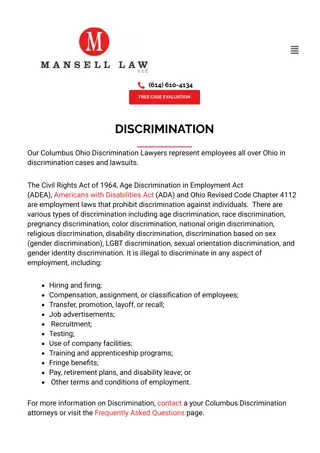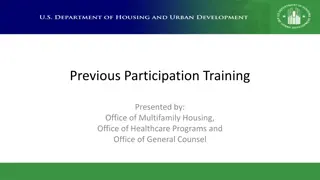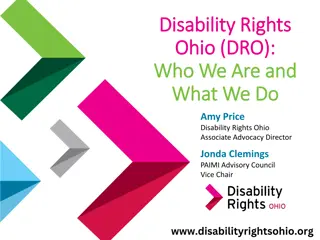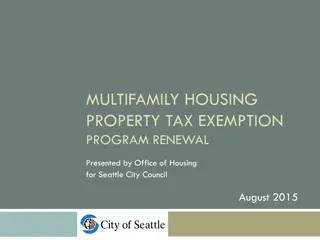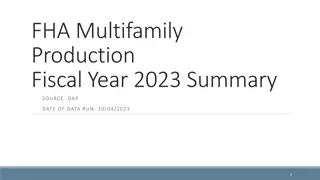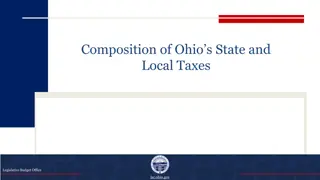Multifamily Construction Challenges and Solutions in Columbus, Ohio
Columbus, Ohio is facing housing market challenges including insufficient supply, rising prices, and increasing homelessness. Initiatives such as using HOME funds for multifamily construction aim to address these issues by focusing on shovel-ready projects, providing affordable housing options, and leveraging state and county funding. The review of sources and uses emphasizes the importance of real commitments and project reserves for successful development.
Download Presentation

Please find below an Image/Link to download the presentation.
The content on the website is provided AS IS for your information and personal use only. It may not be sold, licensed, or shared on other websites without obtaining consent from the author.If you encounter any issues during the download, it is possible that the publisher has removed the file from their server.
You are allowed to download the files provided on this website for personal or commercial use, subject to the condition that they are used lawfully. All files are the property of their respective owners.
The content on the website is provided AS IS for your information and personal use only. It may not be sold, licensed, or shared on other websites without obtaining consent from the author.
E N D
Presentation Transcript
Using HOME funds for Multifamily Construction Rita Parise, Housing Administrator
Columbus, Ohio 2022 Population 913,129, metro area 1,687,000 14thlargest city in the country Population growth in the Columbus area accounts for more than all the population growth in Ohio Economic Development Intel to build a $20 million manufacturing operation in nearby New Albany will employ 7,000 construction workers to build and 3,000 high paying jobs when complete - Honda to build a $3.5 billion battery plant with LG in Fayette County which is 30-45 minutes away
Columbus Housing Market Insufficient supply of housing at all price points and tenures Rapidly rising wages leave apartment communities without management and maintenance staff Bidding wars for single family homes lead to excessive prices for homes Rents are increasing at a high rate Homelessness is increasing and some of the homeless have jobs but cannot afford rent Columbus is in the process of rewriting the zoning code currently almost every development needs zoning variances The City of Columbus includes Columbus City Schools and numerous suburban school districts. Columbus City Schools test scores are in the bottom 50% of Ohio
Selecting Shovel Ready Multifamily New Construction Projects What is being proposed? Does it address the most pressing needs? Family housing need three and four bedroom units Permanent supportive housing limited by availability of rental subsidy Lower rents developers who want more than the standard $300,000 per project in HOME funds must commit to providing 30% units to households in shelter with an income sufficient to support a 30% rent. Most LIHTC developments commit to at least some 30% units. Proximity to transit What other forms of leverage are there? State HOME funds County funding Project based vouchers
Review of Sources and Uses What is the total development cost? If it is higher than the Section 234 limits, why is that? What sources are in the project? How real are the commitments? How to handle sources that may come but are not committed yet (ex Federal Home Loan Bank)? What kind of reserves does the project have? Construction contingency Rent up Operating reserve
Income and Operating Expenses Are rent requirements met for all funders? What are the projected operating costs? How do they compare to your standard (we use OHFA s standard)? What happens after the 15 year tax abatement expires? Do operations allow for funding a replacement reserve? What is the debt coverage ratio (we require 1.2-1.5)? If there is no debt, look at operating expense to income (should be no more than 90%)
Developer Capacity Developer history and experience New developer with significant experience may outweigh and existing developer with all new staff Financial capacity ability to weather difficulty delays, supply chain issues, COVID shut downs Equity provider for developers without deep pockets, will the equity provider stand behind the project if problems occur? CHDO Set Aside staying in contact with CHDOs and finding out what is in the pipeline paying attention to how projects get done CHDOs don t often have capacity to do LIHTC projects more risk
Market Demand For rental housing, market demand is very high. For LIHTC projects we require a market study (they have to have one anyhow) Make sure to consider other projects under development in the market area For non-LIHTC projects, we accept census data for the site and surrounding areas on number of households, number of income qualified households and how those compare to the number of units being created For phase 2 projects, inquire about the waiting list
Best Laid Plans Current development market is chaotic prices are up and down every day and funders need to be aware of what is changing and how Interest rates increasing means less mortgage funding for projects, check mortgage amortization Be prepared to pivot look at the benefit of the project, the status of development and determine if additional funds are worthwhile Sometimes you have to say no



